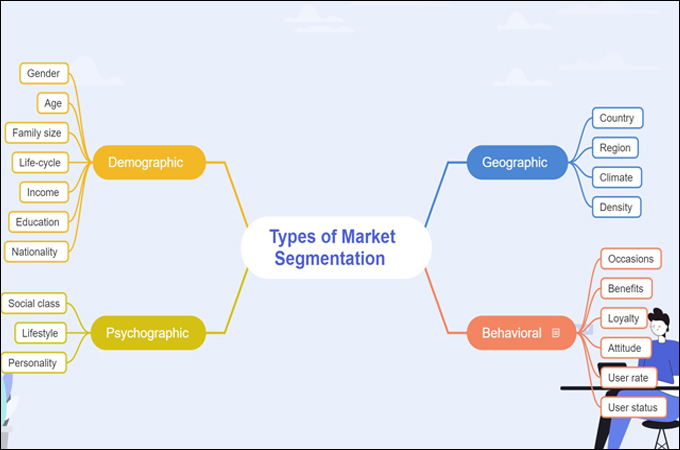
Market segmentation is a marketing strategy in which a company divides prospective customers into groups with common interests and needs. With it, companies will be able to evaluate different categories of consumers. Hence, minimizing the risks and seeking clarity to focus the resources on efforts that most likely to be profitable is viable. In line with this, you get to tackle different segments of the market such as geographic, demographic, psychographic, and behavioral. These will help further classify your target market and reach the most valuable customers. Learn more about marketing segmentation and see the examples provided below.
Market Segmentation Tutorial
Why is Market Segmentation Important?
Effective segmentation is vital for every business because that different conclusion are derived through this strategy. This greatly affects the marketing of a business particularly increasing competitiveness, communications, and customer retention. Moreover, with proper market segmentation, you will be able to achieve higher profitability and run a better company.
Types of Segmentation

There are four types of customer segmentation that a firm should closely look into. These will help businesses segment their market and deliver targeted and valuable messaging to target consumers. Discover why they matter for your business and market segmentation.
- Demographic segmentation
Demographic segmentation is a type of segmentation that answers the question ‘who’. It defines customer groups by looking into identifiable traits of people like age, gender, income, location, ethnicity, etc.
- Psychographic segmentation
Psychographic is useful for categorizing audiences through the common personalities and interests of audiences. Here you need to identify the customer’s hobbies, personality traits, values, life goals, and beliefs. When done properly, greatly impacts marketing segmentation.
- Behavioral segmentation
Behavioral is another type of segmentation that is vital in marketing. This requires gathering data about the customer’s actions. This also relates to the customer’s response to your brand. With it, you can group customers in accordance with their purchasing habits, browsing habits, brand interactions, and more.
- Geographic segmentation
Geographic might be the simplest and easiest type of market segmentation to define groups when it comes to the geographic boundary. You can identify this is by gathering information: country, region, ZIP code, city, urban or rural.
Market Segmentation Examples
Here are some ready-made market templates that you can fill out. These are designed to help you analyze your marketing with less thinking about the format or model. With these market segmentation examples, you can identify all the four main types of segmentation. This includes demographic, psychographic, geographic, and behavioral segmentation. Plus, you can edit and add other types of segmentation according to your preference to analyze further your marketing.
Consumer Market Segmentation in Tree Diagram

This example helps you identify the four types of segmentation. It uses a tree diagram approach so you can easily distinguish each customer segment. In case you want to personalize, you can click the edit button attached to the market segmentation examples provided. You can add your personal touch into this segmentation allowing you to modify the background color, node color, and many more.
Business Market Segmentation in Table

Another way to analyze marketing is by creating a market segmentation in a table. In just a few seconds, you can quickly identify the demographic, psychographic, geographic, and behavioral segmentation of your marketing. Similarly, you can customize this table according to your preference. This lets you modify the font style, adjust the table color, attach icons and images.
Create a Market Segmentation in GitMind
You can develop market segmentation in different ways. You can work on it by analyzing your existing customers. This is where you get feedback, analyzing website analytics, audience interest, etc. Once you have a clear overview of your potential customer and gather all the necessary information, you can now proceed to create a visual representation of your marketing segmentation. To create this graphical illustration, we suggest a free tool that is great for business graphic illustrations. GitMind is a mind mapping and flowchart-making tool that suits educational and business needs for creating graphic representations of ideas, concepts, and data. Below is a simple step on how to make market segmentation using GitMind.
- First, open GitMind using your browser and go to the “Templates” section. From here, choose a template with a tree diagram layout.

- Next, click the “Use Template” button to edit the map and add your content to the diagram.

- Once done, you can customize the marketing segmentation using the “Style” feature and change the look and feel. Or just choose from the theme available. Finally, click the “Export” button and select your desired format of the illustration.

Conclusion
You can minimize the wasted efforts and time when you have clear view of your potential audience. This is possible when market segmentation is done properly. On that note, the above content introduced you to the essentials about segmentation. Also, examples are provided to help you make segmentation in no time.
Leave a Comment